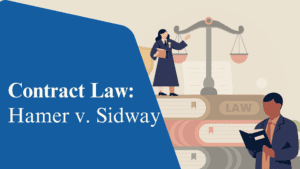
Keywords: negligence definition, negligence law, negligence tort, negligence example
1. Tort of Negligence Definition:
What does negligence mean?
Negligence is defined as failure to perform a duty of exercising appropriate care which cause damage. To put it simply, negligence can be understood as making careless mistake that cause damages.
Unlike intentional tort, the intent to cause harm is not required to constitute negligence. Instead, careless behavior is the main element of negligence. In other words, when it comes to negligence, the offender does not need to mean to injure the victim, but the careless action of the offender is enough to be negligence.
2. Negligence Examples:
Negligence is the most common type of tort. It occurs when a person fails to take a reasonable care which result in injuring another. Common heard examples include:
a. A burger restaurant owner fails to put up a “Caution: Wet Floor” sign after mopping the floor.
b. A driver speeds and crush another car.
c. A doctor makes incorrect medication prescription.
d. A doctor makes a mistake during the surgery.
e. A doctor misdiagnoses the patient which led to delayed diagnosis of serious illness.
3. Four Elements of Negligence
Four elements are required to establish a prima facie case of negligence, including:
a. A duty to be careful
b. A breach of that duty
c. Proximate cause
d. Damages that were caused by the breach
What is the reasonable person standard?
Under tort law, we all have a duty to be careful but how much care do you need to pay? The metircs used to determine the proper standard of care is called reasonable person standard.
The reasonable person standard provides that a person must exercise the same amount of care that a “reasonable person” would in the same situation.
For example, when driving a car, a driver must exercise the same amount of care that other reasonable drivers would do, including paying attention to pedestrians.
Professionals
Professionals are held to a higher degree of standard in their work. For example, a doctor needs to exercise the same amount of care that other reasonable doctors, instead of a random civilian, would do when performing a surgery.
Children
In general, different standards are applied to children. The standard for children
- Under age 7 are considered incapable of negligent conduct
- between age 7 and 14 are compared with the conduct of other children of the same age, experience, and intelligence
However, some courts apply the adult standard of care to children when they are undertaking adult activities, such as driving a car.
How to determine if there is a breach of duty?
The method developed in the case of United States v. Carroll Towing is widely used by courts. The method is called the Hand Formula:
If B < P*L, then there will be negligence liability for the offender.
- B=burden of taking precautions
- P=probability of loss
- L=gravity of personal loss
If the burden of taking precautions is less than the probability of injury multiplied by the gravity of any resulting injury, then the offender will be liable.
4. Defenses to Negligence Claims
There are three types of negligence defenses: (1) contributory negligence (2) comparative negligence (3) assumption of risk
What is contributory negligence?
The contributory negligence is referred to as the victim’s failure to exercise reasonable care when the injury occurs. In several jurisdiction, a victim cannot recover damages if he or she also fails to exercise enough care.
What is comparative negligence?
A majority of states have replace contributory negligence with comparative negligence due to the fact that it has led to unfair results in some cases.
Comparative negligence refers to the tort rule that applies when the victim is partially at fault. Unlike contributory negligence, which totally negates the victim’s right to recover damages, comparative negligence award damages in proportion to the victim and the offender’s percentage of responsibilities of the injury.
There are three types of comparative negligence rules used in different states in the United States: (1) pure comparative negligence (2) modified comparative negligence (3) slight/gross negligence.
What is assumption of risk?
The assumption of risk occurs when a person is aware of an obvious danger but still voluntarily proceeds to undertake the activity anyway. In this case, the victim may not be able to recover loss for injuries.

Comments
Pingback: Strict Liability Tort - CovertProfession